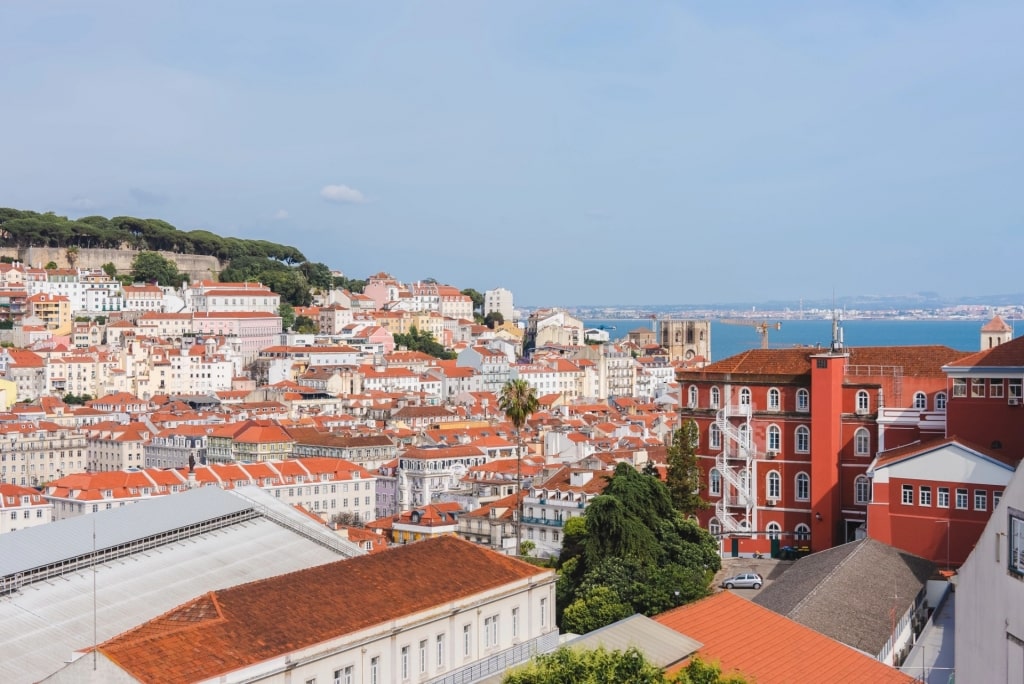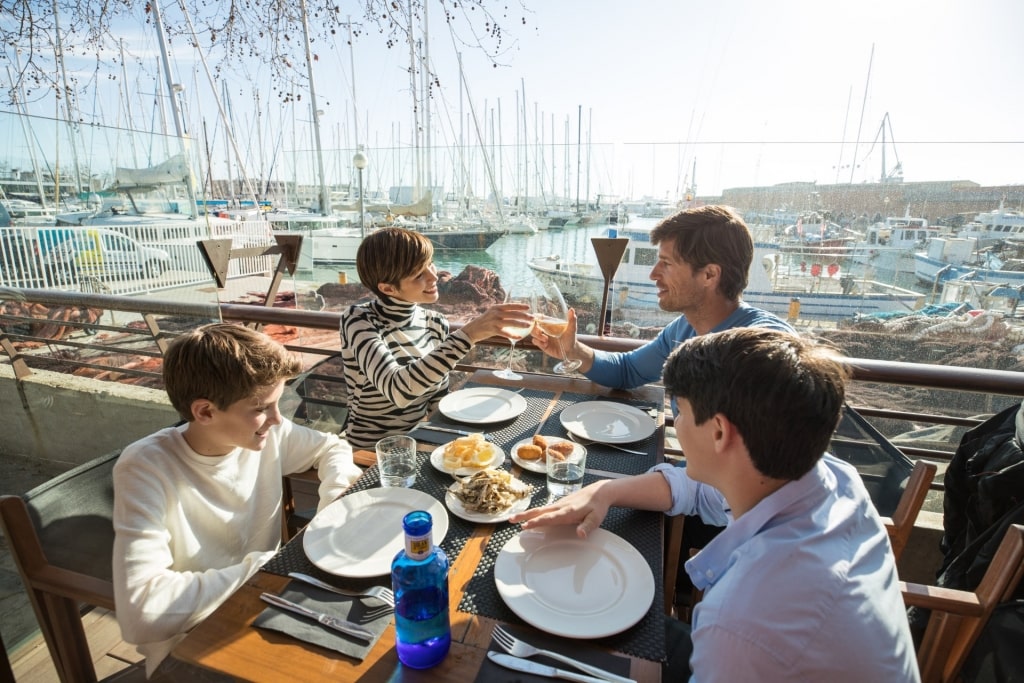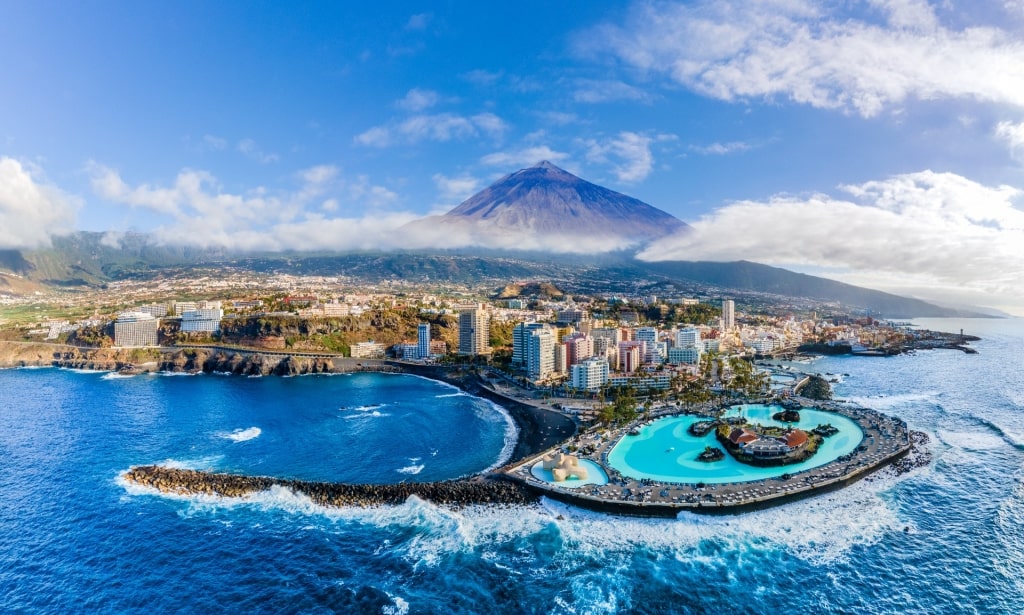The best time to visit Spain and Portugal is in the spring, summer, and fall, when the weather is generally warm and sunny. Both countries also have their charms as winter destinations, particularly for city breaks in Lisbon or Barcelona, although there are significant climate variations between, say, northern Portugal and sun-drenched southern Spain.
Spain and Portugal occupy the Iberian peninsula. Portugal’s coastline is entirely Atlantic, while Spain has both Atlantic and Mediterranean coasts.
Both countries also include several islands. Spain’s Balearics, Ibiza, Menorca, Mallorca, and Formentera, are in the Mediterranean and enjoy a typical Mediterranean climate of hot summers and mild winters. But the Canary Islands, also Spanish, and Portugal’s Madeira, lie in the Atlantic, off the coast of Africa, and have a sub-tropical climate, warm and sunny year-round.
Visiting Spain and Portugal By Season
Summer

Lisbon, Portugal
June, July, and August are peak season in both Spain and Portugal. The weather is hot and sunny and the beaches are busy.
Temperatures do vary according to where you go, although warm weather is a given. In August, for example, expect average daily temperatures of 74.6°F (23.6°C) in Lisbon, 77.3°F (25.1°C) in Barcelona, and 79.7°F (26.5°C) in Malaga. There is little rain, apart from the occasional thunderstorm.
Northern Spain, which has a temperate oceanic climate, is considerably cooler. In Bilbao, for example, the average daily temperature in August is 70.9°F (21.6°C).
Fall
Fall is a wonderful time to visit Spain and Portugal. In September and October, the Mediterranean is still warm enough for swimming, although the Atlantic is bracing. Many wine regions, from the Douro Valley to Spain’s Rioja vineyards, are in the middle of harvest, which is a time of festivity.
In September, expect average daily temperatures of a balmy 73.7°F (23.2°C) in Valencia, Spain. Porto’s daily average is 65.8°F (18.8°C), although the Douro Valley, a popular day trip from Porto, will be considerably hotter.

Palma de Mallorca, Spain
By November, the season is winding down. Late October and November tend to be among the wettest months across the peninsula. The Balearics’ season is over for the year, although Palma, Mallorca is still popular for city breaks in fall.
Winter
December, January, and February are the coolest months in Spain and Portugal. The warmest region is Spain’s Costa del Sol, which attracts a lot of northern Europeans looking to escape their chilly weather. Cities like Lisbon, Barcelona, and Bilbao are still busy, but more with weekend breakers coming for the museums and historical attractions than fine weather.
There’s a rush of activity in December as Europe gears up for Christmas, but January and February can be considered low season.

Tenerife, Canary Islands
The Canary Islands and Madeira, on the other hand, are busy with winter sun-seekers. Tenerife, for example, enjoys average daily temperatures of 65.4°F (18.5°C) in January, while Barcelona is a much cooler 49.6°F (9.8°C).
Spring
March, April, and May, spring in Europe, is arguably the best time to go to Spain and Portugal—May in particular. There’s low rainfall and daytime temperatures are warm enough to enjoy outdoor dining and maybe even sitting on the beach, but not too hot for sightseeing.
You’ll see wildflowers everywhere, and in the vineyards, the vines are fuzzy and green with new growth. The sea is still pretty cold for swimming, though.
When Is Rainy Season?
Rainy season varies across the Iberian peninsula. October in Barcelona is the wettest month, with an average of 3.9 inches (100mm) of rain.
In Tenerife, March is the wettest month, with a much lower 1.6 inches (40mm) of rain.
Lisbon receives moderate rainfall between October and January. November is the wettest month, receiving on average 5.3 inches (135mm), with winds blowing in from the Atlantic. November is also the wettest month in Bilbao, with 5.7 inches (145mm) of rain.
Malaga, on the other hand, receives very little rain; the Costa del Sol region claims to enjoy 325 days of sunshine annually, hence its popularity as a winter getaway.
When Is High Season?
Increasingly, Spain and Portugal have an extended high season, with visitors flocking to the cities and beaches from May to September. The busiest time, though, is July and August, when schools in Europe are on vacation and locals head for the coasts.
Cities are busy, too, with festivals and outdoor dining. This is the time to embrace the local way of life, stopping for a siesta in the afternoons and venturing out in the evenings for a late dinner when the heat of the day has eased.
You’ll find that even a short distance inland, temperatures can be scorching in July and August, so for visits to cities like beautiful Seville, you need to pace yourself.
When Is Shoulder Season?

Barcelona, Spain
Spring and fall are shoulder season in Spain and Portugal, on the mainland, at least, with April, May, September, and October considered shoulder season months. These are all wonderful times to visit, but decide what you want to do. If swimming in the sea is important, September and October are best. If you’re a hiker and want to enjoy the green countryside and wildflowers, pick April and May.
Either way, shoulder season means fewer crowds and more space for viewing some of the most beautiful places in Spain, from the Guggenheim in Bilbao to the Sagrada Familia in Barcelona and the Alhambra Palace in Andalucia, in southern Spain.
When Is Low Season?
Low season in Spain and Portugal is January and February, when the whole Iberian peninsula receives the most rainfall and days are short. For example, Lisbon receives an average of 4.5 hours of sunshine in December and January, compared to 11.5 in July.

Infinite Veranda
Do you want to discover the cultural riches of these countries for yourself? Browse our Spain and Portugal cruises and plan your European adventure.



